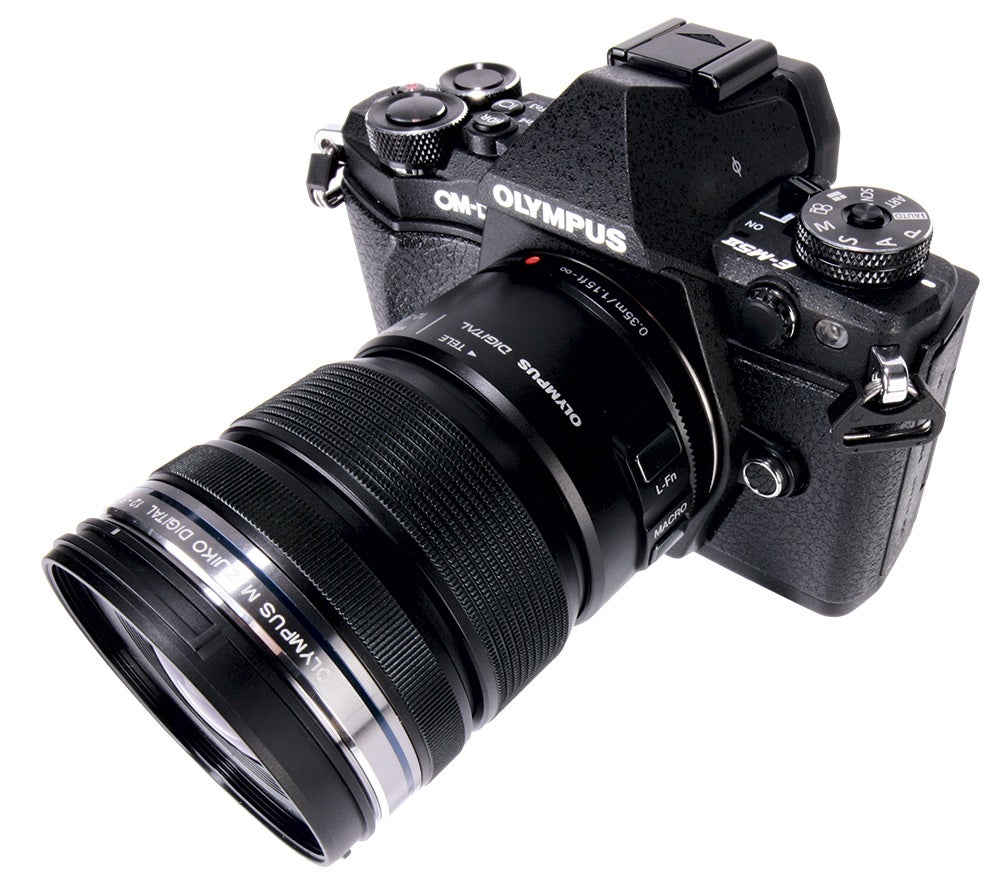Michael Topham and Andy Westlake take a look back over the camera developments made this year, and choose the advances in technology they like best
High-resolution multi-shot mode
Andy Westlake looks at a resolution-enhancing feature that appeared on a couple of cameras this year
I suspect most photographers have a pretty good idea of what they understand by a camera’s resolution. It’s the headline megapixel count, and a higher number equates to more captured detail (and is therefore ‘better’).
This year, however, we’ve seen a couple of cameras that confound this idea. By taking multiple frames in quick succession, they can produce visibly more-detailed images. How can this possibly work?

Olympus’s OM-D E-M5 II can shoot 40MP composite images using its 16MP sensor
To understand this, we need to consider how image sensors operate. The key point is that they record colour by placing red, green or blue filters over their light-sensitive pixels, so only one colour is recorded by each pixel. The filters are usually arranged in an RGBG Bayer pattern, and the full-colour image is reconstructed by a process known as demosaicing.
However, the demosaicing process isn’t perfect and can result in less-than-perfect pixel-level image quality. But what if it were possible to record all three primary colours at each image pixel? With demosaicing no longer necessary, image quality should be improved.
Two cameras launched this year do just this – the Pentax K-3 II and the Olympus OM-D E-M5 II. Both of these can use their in-body image-stabilisation systems to shift the sensor by one pixel horizontally or vertically between shots. So by taking four exposures in succession while shifting the sensor by precisely one pixel each time, it’s possible to record full-colour data at every point in the image. The E-M5 II goes a step further; after the first set of exposures it moves the sensor by half a pixel and repeats the process. This finer sampling of the scene allows an even higher-resolution image to be constructed, meaning the E-M5 II can output detailed 40MP JPEG files using its 16MP image sensor.

This image was shot in both 16MP and 40MP composite modes

A 100% crop from 40Mp high resolution composite version shows sharp, fine detail

A 100% crop from a standard 16MP file upsampled to 40MP shows visibly less detail
While this certainly works, giving cleaner, higher-resolution images that also have lower noise, it also has drawbacks. It requires neither the camera nor the subject to move during the process, which takes a second or so to complete. This means it’s only suitable for static subjects, and the camera has to be fixed onto a sturdy tripod. It is therefore not currently a substitute for simply buying a camera with more pixels, although it can still be a useful tool.
Of course, this is just the first step. It’s easy to see how a practical handheld version of this approach could be developed, using faster shooting rates to capture the sequence of frames more quickly, and more advanced image-stabilisation systems capable of applying the required pixel-level sensor shifts accurately on top of the usual adjustments for camera movement. I doubt this will come for a while yet, but I wouldn’t be surprised to see it appear in cameras four or five years down the line.
There’s still a real question about whether anyone really needs this kind of resolution. The main point is that it allows you to zoom further into an image while viewing on-screen, or crop further for printing. It may not be essential, but it’s nice to have the option without having to shell out for a high-resolution camera.




